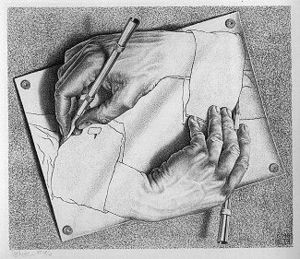Rainer Maria Rilke tells us that a good poem can only emerge from a lifetime of experiences, which are not only remembered but, you might say, inhabited. (Or you might say that they inhabit you.)
For the sake of a single poem, you must see many cities, many people and Things, you must understand animals, must feel how birds fly, and know the gesture which small flowers make when they open in the morning. You must be able to think back …
And it is not yet enough to have memories. You must be able to forget them when they are many, and you must have the immense patience to wait until they return. For the memories themselves are not important. Only when they have changed into our very blood, into glance and gesture, and are nameless, no longer to be distinguished from ourselves—only then can it happen that in some very rare hour the first word of a poem arises in their midst and goes forth from them.from The Notebooks of Malte Laurids Brigge (Mitchell 1982, 91)
If we turn from the creation of a poem to the creation of the cosmos, turning the act of creation inside out (as it were), we get the concept of cosmic memory or karma. This is epitomized in Bhagavad-Gita 8.3, as translated by Gandhi (1926/2000, 136-7): ‘The Supreme, the Imperishable is Brahman. Its manifestation is adhyatma. The creative process whereby all beings are created is called karma.’ Gandhi’s comment on this verse personalizes the process into an act: ‘Creating all beings and keeping them in existence is an act of renunciation and is known as karma.’ In the act of creation, Brahman renounces His Supremacy and Imperishability.
This seems to resonate with the Joycean idea that creation was the fall and the sin of the All-Father. Joyce would not have described creation as an act of renunciation, but Alan Watts (1966) comes close in his version of the Vedic story: the One Subject of experience disguises himself as myriad sentient beings, each of which forgets his identity with the cosmos and takes his individual role to be his real self. The object of this differentiation game is to remember the cosmic self – which cannot be truly remembered (experienced) unless it has been forgotten! So here too we have the One renouncing its omniscience in order to rediscover it. The equivalent in the Joycean myth is the felix culpa, ‘fortunate fall’ or ‘happy fault.’
I do set my bow in the cloud, and it shall be for a token of my covenant between me and the earth.… the everlasting covenant between God and every living creature of all flesh that is upon the earth.
— Genesis 9.13-15 (KJV)
There can be no rainbow without the rain (as well as the sun), no covenant (and no Ark) without the Flood. The bow is the sign of creative tention (Chapter 3).
